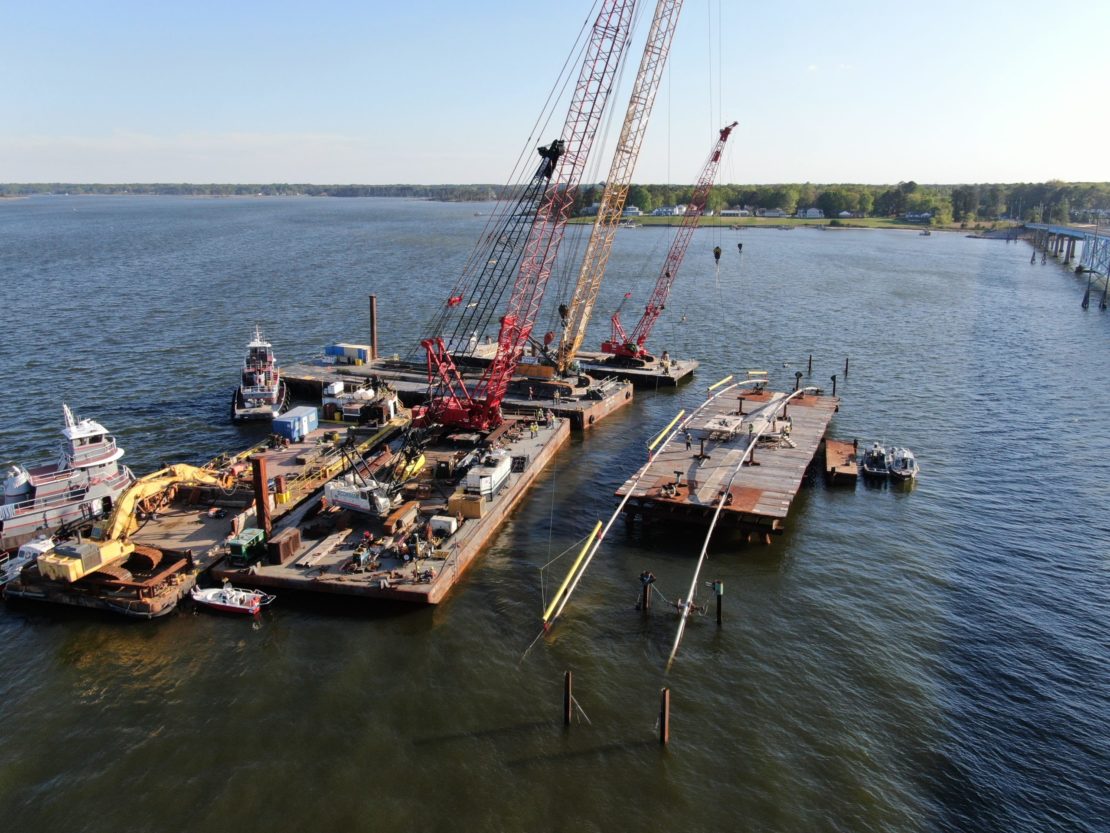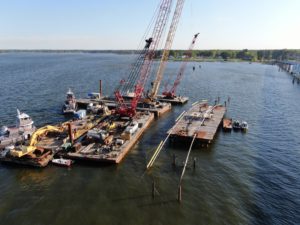The project honored as the 2021 Trenchless Technology Project of the Year for New Installation is one that successfully applied horizontal direction drilling (HDD) to place underground a critical pair of 12,200-ft parallel power cables under the Rappahannock River near White Stone, Virginia – a hot topic and the type of crossing that is recently making national headlines.
Undergrounding telecom/power lines has been a part of HDD’s repertoire for many years but a national spotlight was shown on this particular type of application in August with PG&E’s announcement that it plans to underground 10,000 miles of power lines in northern California. This year’s winning New Installation project was selected prior to this news.
Traditionally, power lines are installed overhead, but this option leaves them vulnerable in times of severe weather and other events such as wildfires — costing owners even more money and time to replace and/or repair. HDD piques owners’ interest as a long-term protection for their investment when looking at environmental, aesthetic and cost factors.
The Greys Point to Rappahannock Station-Rappahannock River Crossing provides a great example of how HDD is utilized in undergrounding power lines. This project installed two parallel power and cable lines, replacing an overhead 115kV line, giving Dominion Energy Virginia (DEV) customers more capacity, as well as protection from potentially future downed lines.
This project was incredibly challenging for the contractor and its engineers designing it, with several issues requiring tremendous planning and teamwork to overcome. These issues included logistical planning, working during the early months of the COVID-19 pandemic, creating a design that would be least disruptive to the waterway, resulting in the successful undergrounding of the lines; the project also included intricate overboarding and post lay burial of intermediary tie-in sections using a unique jetting machine to maintain the depth of the new lines 10 ft below the river’s bottom without the use of any mechanical dredging.
The project featured the Engineer, Procure and Construct (EPC) delivery process, which requires critical planning and communication to put together a design to install the two 8-in. steel pipe cables, with two fiber-optic cables tethered to each.
“It’s truly an honor for this project to be selected recipient of this year’s Project of the Year,” says JB Brown, Mears senior vice president and project director for this project. “This could not have happened without a lot of dedicated people working together…It’s great to know the industry sees and recognizes what we are doing.”

